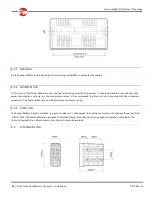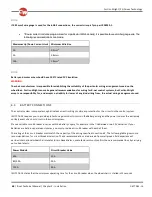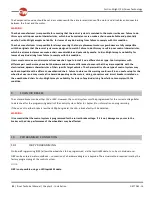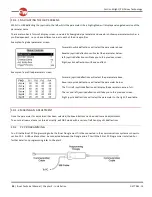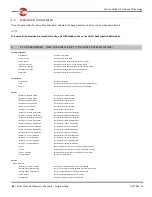
Curtiss-Wright | PG Drives Technology
SK77981-14
55 | R-net Technical Manual | Chapter 2 - Installation
Repeat the test a further three times, pushing the joystick slowly backwards, left and right.
11.6
TEST DRIVE
Drive the wheelchair and make sure that it operates correctly for all positions of the user controls.
11.7
SOFT-STOP TEST
Drive the wheelchair at full forward speed and switch the control system off.
The wheelchair must not stop suddenly, but should decelerate to standstill.
In addition, ensure that the requirements in section 1.3 of this chapter are satisfied.
11.8
LIGHTS, INDICATORS AND HAZARD LAMPS TEST
If lights are fitted:
Visually check each bulb for correct illumination.
Check each bulb for correct illumination and that the flashrate is 1.5Hz ± 0.5Hz.
Disconnect each bulb in turn and check that the remaining bulb for that side flashes at 3Hz ± 0.5Hz.
If hazard lamps are fitted:
Check each bulb for correct illumination and that the flashrate is 1.5Hz ± 0.5Hz.
11.9
ACTUATOR TEST
If actuators are fitted:
Check each motor for correct direction of movement.
Ensure the mechanical end-stops are secure and that they stall the actuator motors, thus operating the ISM’s
automatic end-stop detection.
11.10 INHIBIT INPUT TEST
Insert an appropriate battery charger, or equivalent inhibit connection, into the C harger Connector on the JSM and ensure that
drive is inhibited.
If Inhibits 2, 3, 4 and 5 are used for inhibit or speed limiting purposes, suitable tests should be devised to ensure correct
operation.
12
ELECTROMAGNETIC COMPATIBILITY (E.M.C. )
The R-net family has been tested for compliance with EC directive 89/336/EEC, and the E.M.C. requirements of EN12184, the
FDA and the FCC. The guidelines in this section will help you to make sure that your wheelchair in stallation will easily meet
these requirements. You should consider E.M.C. and perform relevant tests as early as possible in the design phase.

